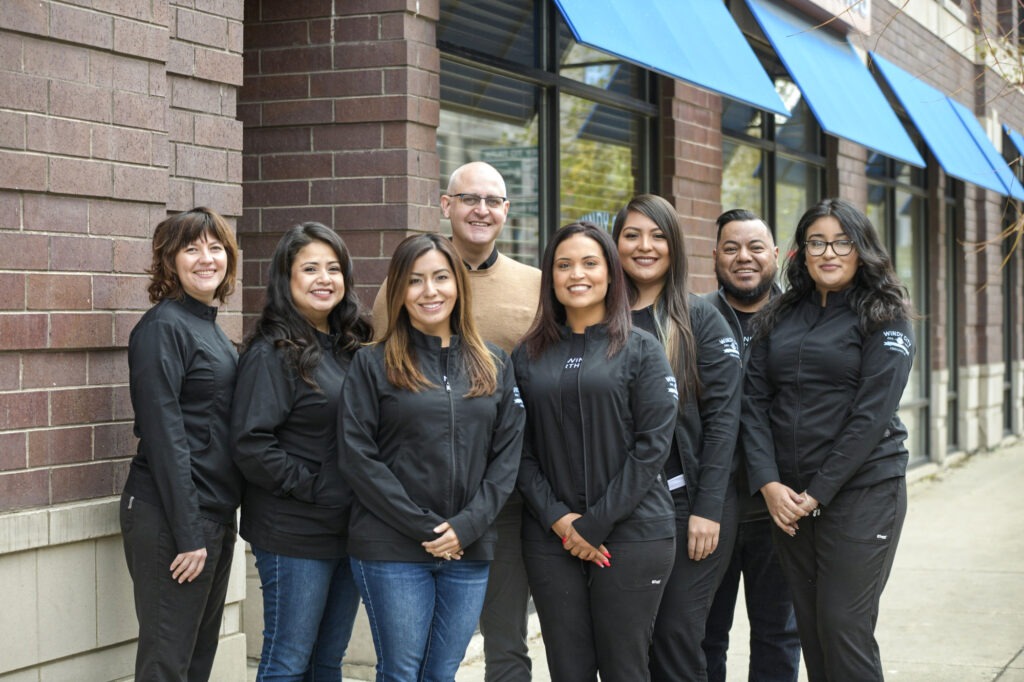You may look at braces and wonder how exactly we get them on our patients. Surely it’s not one size fits all? In fact, it’s a hugely bespoke process, and today, Windy City Orthodontics will explain: How do orthodontists create customized plans for braces?
The Main Types of Braces
If we’re looking at braces and excluding clear aligners, there are two main options: clear and metal. We charge the same amount for all of our comprehensive treatment options.
- Clear braces are made of polycrystalline ceramic material, which makes them nearly invisible since they match natural teeth so well. They create an option that can provide aesthetic solutions in addition to practical ones. We use LightForce braces in our office, which are custom 3D printed to fit each tooth.
- Metal braces are classic and highly effective, consisting of strong metal brackets and the rest of the traditional components. These tend to be the best option for kids due to physical activity and other risk factors that can damage the appliance.
How The Process Works
Every patient will have individual factors that will make their treatment plan unique. Here are a few common ones we will consider:
- Age can influence the treatment approach and the response of the teeth and jaws to orthodontic forces. Children may respond more quickly due to flexible tissues, whereas adults may have more complex issues with longer-term solutions.
- Severity of orthodontic issues is obviously a huge consideration. It will impact the duration and complexity of treatment, as well as potential additional measures that need to be taken.
- Anatomy variations, like the size and shape of the teeth, the position of the jaws, and the thickness of the gingival tissue, impact treatment planning and mechanics.
- Pre-existing conditions, like gum disease, temporomandibular joint (TMJ) disorders, or systemic health issues, may require additional levels of coordination and care between our office and other healthcare providers.
But even with variables like these, our general planning process will go like this:
- Initial Consult: Dr. Pakravan may meet with you to have a light examination of your teeth, jaws, and overall oral health. We’ll discuss the goals of treatment at this time. If he doesn’t meet with you that day, he will subsequently review your records.
- Imaging: We will use x-rays and/or digital scans and impressions of your mouth and jaws to assess the alignment of your teeth and positioning of your roots as a part of each initial examination (assuming you don’t have imaging from a prior dentist). One of the advantages of this technology is a high degree of precision throughout the treatment process.
- Treatment Planning: Based on the goals we discuss and your medical history, Dr. Pakravan will develop your personalized treatment plan, and a treatment coordinator will explain it to you in depth. We use a highly accurate 3D digital setup of your teeth to show you what your progress will look like with your braces from the beginning of treatment. Once your 3D models are made and plans are finalized, we’ll send the data to a dental lab where braces will be custom-made to fit your teeth.
- Application: An appointment will be made specifically to apply the braces. During this time:
-
-
- We’ll clean and dry your teeth to prepare them for bonding.
- A special adhesive will be used to bond the brackets to the front of your teeth.
- After they’re bonded, archwires are threaded through the brackets and secured with small elastic bands.
-
- Adjustment Appointments: Throughout your treatment with braces, you will have periodic appointments to make adjustments to the braces, such as changing the archwire or replacing ligatures.
- Monitoring Progress: Similarly, we will be seeing you regularly to monitor your progress and ensure your teeth are moving into their desired positions based on our plan. We can also use these check-ups to take periodic x-rays or scans to track movement and make changes to the overall treatment plan.
- Braces Removal: Once your teeth are in their new positions, we will remove your braces. This process involves carefully detaching the brackets from your teeth and removing the remaining adhesive.
- Retention Phase: After the braces are removed, you will likely need to wear a retainer to maintain the new position of your teeth during what’s called the retention phase. We will provide instructions on how to wear your retainer and for how long.
- Follow-Up Appointments: Finally, we will see you from time to time after completion of treatment to check on the longevity and stability of your results.
Plans Made for You
One of our goals as a team is to ensure that each patient’s situation is addressed with care and attention. Rest assured that we’re experts in what we do, and we can’t wait to get started with you on your orthodontic journey! You can reach our Lakeview or Lincoln Park offices for your free consultation at (773) 207-3089!


